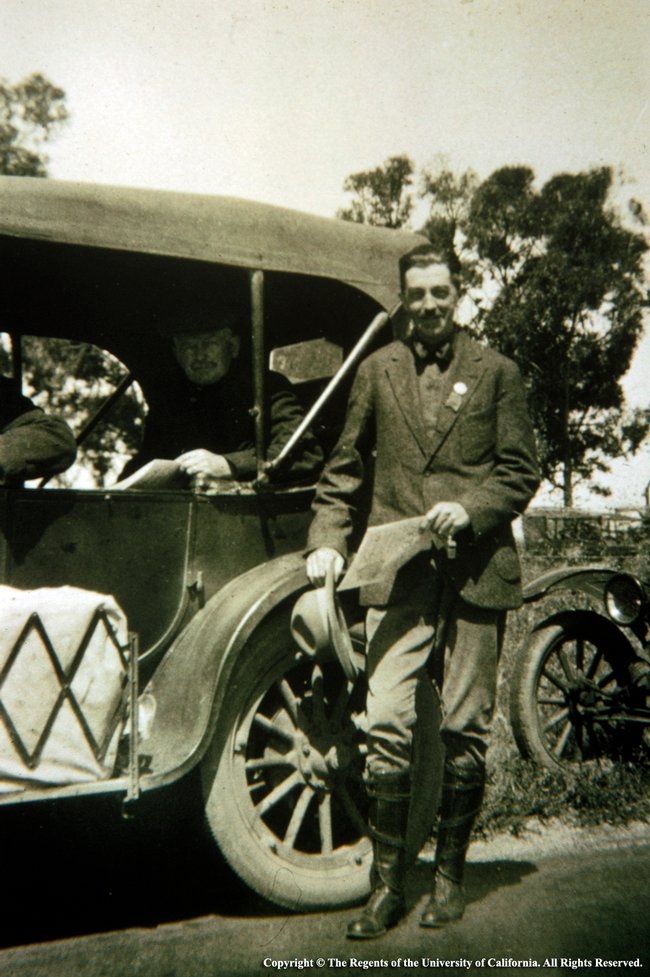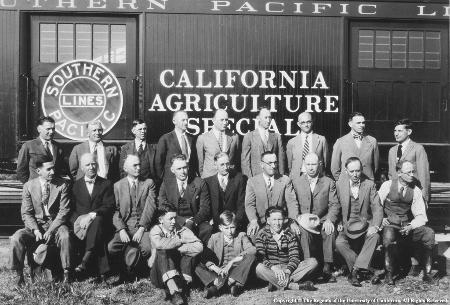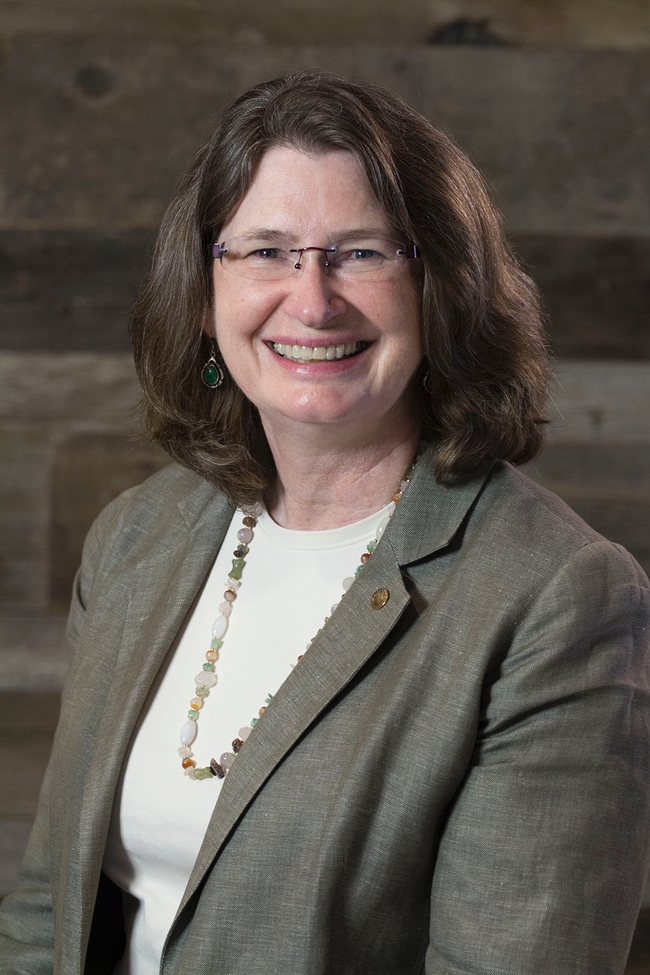Posts Tagged: Barbara Allen-Diaz
VP message to the ANR Community
Last year we celebrated the Centennial of Cooperative Extension, created by the Smith-Lever Act of 1914. It's been 148 years since the founding of the University of California and 129 years since creation of the Agricultural Experiment Station, which resulted from passage of the Hatch Act in 1887.
As I reflected on these events, and on my career, I thought it would be a good time to briefly outline the history of the Division of Agriculture and Natural Resources, how it was created and how it fits into the larger University of California.
As is common in the development of all great organizations, the history of the University of California is populated by larger-than-life figures as well as internal and external political battles for money, prestige and control. The history of agricultural science and teaching in the University and the development of UC ANR, as we know it today, was part and parcel to those struggles. It is a fascinating story and one that I encourage everyone to read about in books such as Science and Service, by Ann Foley Scheuring. I can only hit the highlights in this short article, but I hope that you will find this history as fascinating as I have.
The original University of California campus was at Berkeley. Tension between agricultural interests and agriculture-focused research on the one hand and the liberal arts and other sciences on the other has been part of our history from the beginning. Initially, the College of Agriculture within the new UC was politically very powerful, with a seat on the Regents, but agriculture programs had a paucity of students. It wasn't until such leaders as Edward Wickson, Eugene Hilgard, Thomas Hunt and others began to build the science base for agriculture that agricultural concerns began to take off at the University.
In 1905, the state legislature passed a bill to establish a University farm to ensure that UC was responding to agricultural needs. Although many sites were considered, Davisville (now called Davis) was chosen. The University Farm School offered a 3-year course open to any boy over the age of 15 with a grammar school education, shortly thereafter amended to a 2-year curriculum and a minimum age of 18. University students from Berkeley working toward a degree in agriculture were encouraged to attend the Farm School at Davis for a few months to add practical experience to their scientific work.
In 1920, several changes occurred affecting agricultural programs within the University. Until then, all agriculture faculty, research staff, and agricultural extension farm advisors held academic titles with the right to vote as members of the Academic Senate. When farm advisors exercised their voting rights on a particular issue over the objections of other Senate members, the Berkeley faculty moved to restrict Academic Senate membership to only those with academic teaching titles. This action removed Agricultural Extension faculty from the Academic Senate, and led to the creation of the Academic Assembly Council to represent extension academics. A second major change was the result of a reorganization of the College of Agriculture into four parts: the Department of Agriculture, for academic instruction leading to a university degree; the Agricultural Experiment Station (AES), for original research; the Agricultural Extension Service, for statewide public outreach; and the University Farm School. The Dean of the College of Agriculture would retain leadership over all four parts, but each part would also have its own head, and only the Department of Agriculture faculty would have Academic Senate membership.
Between 1952 and 1974, UC made numerous changes to its agriculture programs. Among the most notable were the conversion of Davis and Riverside to general campuses in the UC system and UCLA's elimination of its agricultural programs and transfer of its AES resources to Riverside.
In 1974, with another Regents' reorganization, the agriculture deans' reporting lines were moved from the Vice President of UC ANR to their respective campus chancellors. State AES funds were directed to the three campus chancellors, and AES faculties at Berkeley, Davis and Riverside now reported to their campus deans. The Agricultural Extension Service was renamed Cooperative Extension (CE) to better reflect its broadening social and economic purview across the state. The Vice President of UC ANR remained director of the AES and director of CE systemwide for UC, with all state CE funds and all federal AES and CE funds flowing to UC ANR.
Fast-forward to 2015: Today UC ANR remains as the vibrant, statewide academic research, education and outreach arm of UC, composed of more than 330 CE faculty. Some of these academics are located on campuses, some are at Research and Extension Centers and others are in county offices throughout the state. Cooperative Extension Specialists and Advisors work with AES colleagues and other campus-based colleagues to generate new knowledge and serve the needs of the people of California.
Tug-of-wars over money, prestige and control within the UC system have not disappeared, but the mission of UC and that of UCANR continue to ensure a thriving California with healthy and sustainable agricultural systems, healthy environments and healthy people. I, for one, am proud to serve this great organization!
VP message to the ANR community
Colleagues,
UC ANR always has a lot going on in the world of nutrition, but this month we seem as active as ever in this important space.
First came the announcement late in February that Pat Crawford, a UC ANR Cooperative Extension specialist who previously served as the director of the Atkins Center for Weight and Health at UC Berkeley, would be joining our Nutrition Policy Institute (NPI). Pat and her growing team of researchers will join NPI, which conducts research to inform, build, and strengthen nutrition-related policy, outreach and programs.
NPI then took center stage later in March when it distributed a national news release urging the U.S. Department of Agriculture to make water “first for thirst.” What this means, essentially, is that NPI is taking a strong stand in asking the federal government to promote plain drinking water as the healthiest beverage. We've even asked the USDA to add a symbol for water to its “MyPlate” graphic.
NPI developed a “Take Action!” page on its website with easy-to-follow guidelines for submitting comments on the Dietary Guidelines for Americans. For those of you who might be interested in sharing with your friends and family, the “Take Action!” web page is located at http://npi.ucanr.edu/water.
Finally, on March 24, the Sacramento Bee published this op-ed piece penned by UC ANR Cooperative Extension advisor Rachel Surls from Los Angeles County. Working with our communications staff, Rachel writes eloquently about urban agriculture and cites several examples of how urban farming is working well in cities across our state. She clearly shows how those case studies support UC's Global Food Initiative and its goals.
As always, I appreciate the work all of you do on behalf of UC ANR and, by extension, for the people of California. Thank you!
Barbara
VP message to the ANR community
Colleagues,
As we near the end of February and look ahead to the spring, there continues to be a tremendous amount of activity and good work going on within ANR. Thank you, as always, for your efforts.
This month, I'd like to focus on an event that likely hasn't hit your radar just yet – the Strategic Initiatives Conference scheduled to take place Oct. 5-7. Our Strategic Initiatives (SI) are a vital component of ANR's overall vision, and I truly hope as many of you as possible can take part in the conference to gain an appreciation for what's already been accomplished with the SIs and to get inspired for what's to come.
The conference will offer a rare opportunity for the entire SI community to come together. The organizing team is planning individual SI meetings, in-service training, and meetings with program teams and workgroups, among other activities. The individual SI gatherings give us a chance to discuss the broader direction of SI programmatic activities within each topic area.
We'll kick the conference off with a welcome dinner on the 5th. Hopefully, it will be an opportunity for all of you to meet the new VP of ANR.
One portion of the conference will be open to legislators and their aides. We'll focus that session on highlighting to our elected officials the progress made by each of the SIs, demonstrating to them our effective use of grant monies.
You'll soon see a save-the-date email, but it's not too early to get this important event on your calendars now.
Also, don't forget that the Work Environment workshops begin on Monday, March 2. Please attend the one in your region to engage in a lively discussion about the results of the Work Environment Assessment and how you can help the Division move forward.
I hope you'll enjoy this edition of ANR Report. As always, it's packed with news and features, including information on a bioeconomy conference coming up in April, new software and licenses available to UC ANR staff and academics, a poultry website offering answers about backyard chickens, the updated California Master Gardener Handbook, and other topics.
Barbara Allen-Diaz
Vice President
ANR members honored with range awards
The Society for Range Management bestowed its highest honor, the Frederic G. Renner Award, on VP Barbara Allen-Diaz on Feb. 2 at the society's annual meeting in Sacramento. The society gives the premier award annually to members who have sustained accomplishments or contributions to rangeland management during the last 10 years. Allen-Diaz is the first female to receive the award.
“Barbara has a record of outstanding research productivity that has affected the understanding and management of California rangelands and has had global impacts,” said Amy Ganguli, assistant professor of range science at New Mexico State University.
UC ANR Cooperative Extension advisors John Harper of Mendocino County and Stephanie Larson of Sonoma County were among the 2015 Outstanding Achievement Award winners. Sheila Barry, UC ANR Cooperative Extension director and advisor in Santa Clara County, won the 2014 Range Manager of the Year award for the Cal Pacific Section of the Society for Range Management.
More than 1,300 people attended the Society for Range Management annual meeting held Jan. 31 – Feb. 6.
Barry co-chaired the conference planning committee with Alan Bower of the U.S. Department of Agriculture. Several other ANR members also participated in planning the meeting: Larry Forero, Theresa Becchetti, Holly George, Jim Sullins, David Lile, Royce Larsen, Roger Ingram, Morgan Doran, Jeremy James, Mel George, Fadzayi Mashari, Julie Finzel, Jeff Stackhouse, Scott Oneto, Harper and Larson. Even more participated as speakers and attendees.
For conference highlights, select “social media” in the SRM 2015 Managing Diversity guidebook app (Redemption code “SRM2015”), created by Harper, or search for #SRM2015 on Twitter and Facebook.
VP message to the ANR Community
ANR Community,
Welcome to the New Year! I am very proud of all we accomplished in 2014. With retirements and turnovers, 360 new staff personnel joined us in 2014, and we hired 37 new CE specialists, advisors, academic administrators and academic coordinators. We established the Nutrition Policy Institute, ratified the California Naturalist and Master Food Preserver programs as official ANR statewide programs, completed strategic plans for three Research and Extension Centers, and funded a pilot program for graduate students at Berkeley interested in careers in Cooperative Extension. We completed a comprehensive review process for proposed new CE hires and released new academic positions in November to continue our efforts to rebuild our CE footprint throughout the state. Our Rosenberg Water Policy program was reviewed, our competitive grants program was evaluated, and a new-hire programmatic orientation was conducted. These are just a few of the many program highlights throughout the year.
We celebrated the Cooperative Extension centennial with commemorations and celebrations big and small. A highlight of the yearlong celebration was our May 8th Day of Science and Service, when 20,000 people around the state participated in sharing with us how they use water, procure their food, and observe pollinators in their own back yard. Many, many thanks go to our centennial committee for all their hard work.
Before I move on to my plans for 2015, I want to recognize our staff. They are an incredible group of passionate, service-oriented professionals who make all the work we do, as academics, possible. As we continue to rebuild our academic footprint across the state, we are cognizant of the need to ensure sufficient staffing so that all our ANR employees thrive in their various roles.
2015 will bring changes, but also opportunities. As many of you know, I am retiring in June of this year. A new VP search has begun, and although it is time for me to transition, we still have much still to do in the next six months. I intend to bring to fruition some important efforts that I, and your leadership team, have been working on for the past three years. Many of our efforts have been focused on increasing the visibility and recognition of the outstanding, problem-solving research, education and extension work of our CE academics and staff. ANR, as the home of Cooperative Extension and the Research and Extension Center system and providing leadership to the Agriculture Experiment Station, is an important arm of the University of California, and has been recognized as such in many ways including the restoration of our direct reporting line to the UC President, and by financial support from our many friends throughout the state.
In the next six months, we will be very busy. Our financial model currently depends on revenues from the state, federal government, endowments, gifts, contracts and grants - much like a campus. Unlike a campus however, our funds are managed across five different UC ledgers, causing incredible inefficiencies in analyzing and accounting for the expenditures of our funds. We are using a number of vehicles to rectify this, including UC Path, pursuing a single-unified business unit, and clarifying our partnerships with our campus colleagues through detailed business services agreements.
Our CE academics were removed from the Academic Senate many, many years ago. However, we have a strong CE Academic Assembly Council and a robust academic merit and promotion system, which continues to ensure the excellence of our academics in research, education and extension. To address one inequity, we are working with the Academic Senate to establish equivalent status for our CE academics that parallels the Agronomist series, and is a small step in having UC recognize the research and education work of our CE ranks. We also recognize other inequities affecting our CE academics relative to the rights and privileges of other UC academics, and your leadership is working to address them.
Our new hires, academic and staff, will need robust orientation and training programs. Chief of staff Jan Corlett, and training coordinator Jodi Azulai are taking the lead and will work with our existing training committee, strategic initiative leaders, and statewide program directors to both continue and improve our offerings. The Work Environment study results will be an important additional metric in our thinking about orientation and training for ANR. In addition, we will create a Staff Assembly Council to improve the voice for our staff throughout the system.
Bringing our efforts to fruition will improve the Division's efficiency, accountability and work environment. Achieving these sets of actions will enable us to focus more time and resources on what really matters – the core services that UC ANR provides the people of California. Along with our AES colleagues and other partners across the state, UC ANR Cooperative Extension advisors and specialists, program reps, academic coordinators and administrators provide research and education programs that are science-based and provide solutions to some of the most pressing problems in agriculture, natural resources, nutrition and youth development. That is our mission, and one that all of us in ANR take on with passion and pride.
Best wishes to all of us for a fruitful (and very busy) 2015.
Barbara Allen-Diaz
Vice President











